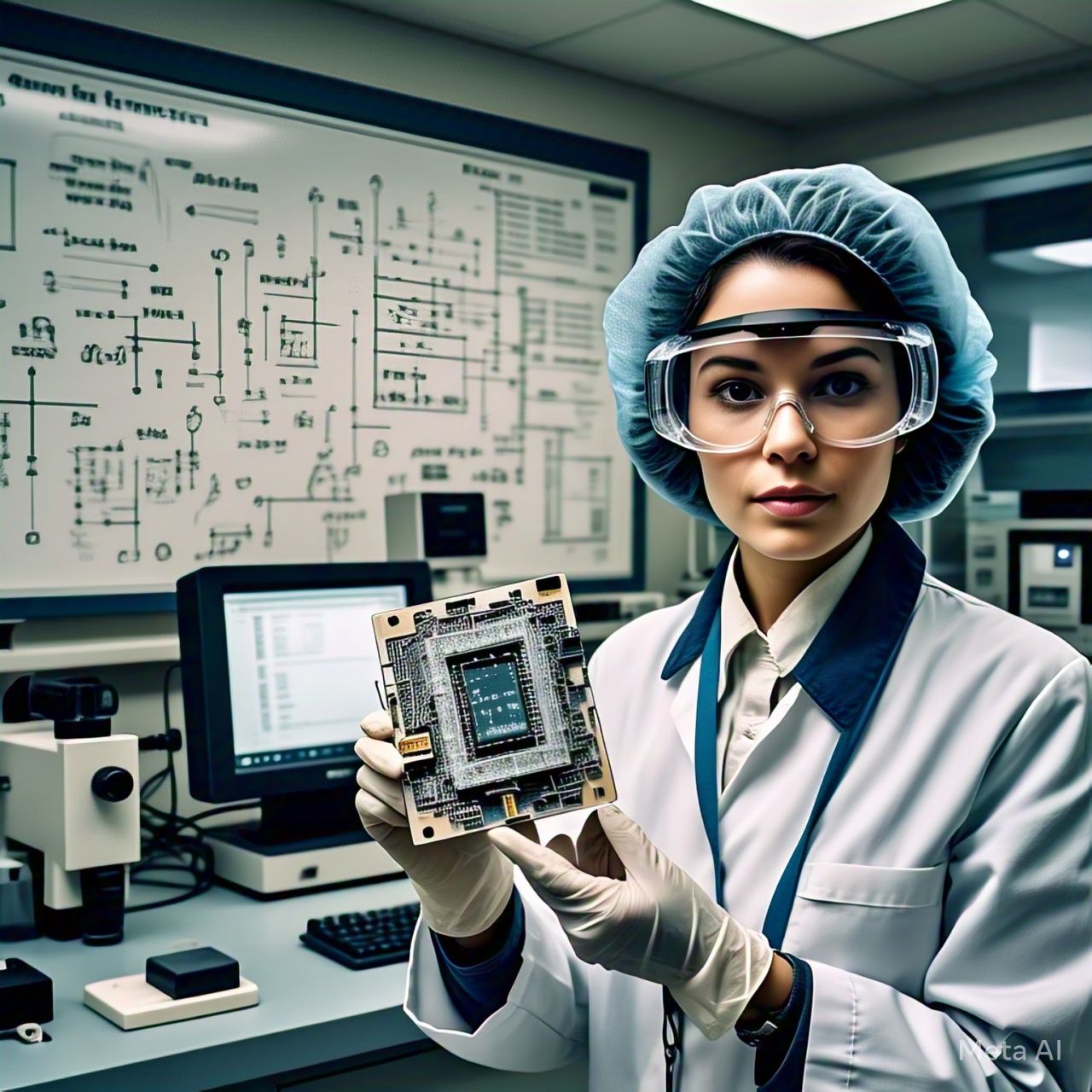Table of Contents
- Introduction
- Understanding Neural Chips
- How Neural Chips Mimic the Human Brain
- The Role of Spiking Neural Networks (SNNs)
- Advantages of Neural Chips Over Traditional Processors
- Real-World Applications of Neural Chips
- Challenges in Achieving Human-Like Intelligence
- The Ethical and Societal Implications
- The Future of AI with Neural Chips
- Conclusion
- FAQs
1. Introduction
Artificial Intelligence (AI) has evolved significantly, yet it still struggles to match human intelligence in adaptability, learning efficiency, and reasoning. Neural chips, designed to function similarly to the human brain, are pushing AI beyond its traditional limitations. This article explores how these advanced processors are closing the gap between AI and human cognition.
2. Understanding Neural Chips
Neural chips, also known as neuromorphic processors, are specialized AI chips designed to replicate the structure and function of biological neurons.
Key Features:
| Feature | Traditional AI Processors | Neural Chips |
|---|---|---|
| Processing Style | Sequential | Parallel, event-driven |
| Energy Efficiency | High power consumption | Low power consumption |
| Adaptability | Limited | Self-learning |
| Real-Time Learning | Slower updates | Fast, on-the-fly learning |
3. How Neural Chips Mimic the Human Brain
Unlike conventional AI, which relies on massive datasets and heavy computations, neural chips:
- Use spiking neural networks (SNNs) to process information similarly to human neurons.
- Leverage synaptic plasticity, enabling the chip to learn dynamically from new data.
- Operate with minimal power, mimicking the brain’s efficiency.
4. The Role of Spiking Neural Networks (SNNs)
SNNs are a major breakthrough in AI, allowing for real-time, energy-efficient learning.
How SNNs Work:
- Neurons communicate through discrete spikes rather than continuous signals.
- Only active neurons fire, reducing computational waste.
- Neural pathways strengthen over time, improving learning efficiency.
5. Advantages of Neural Chips Over Traditional Processors
5.1 Energy Efficiency
Neural chips consume up to 1000x less power than GPUs, making them ideal for mobile and embedded AI systems.
5.2 Faster Learning and Adaptability
Unlike traditional AI models, neural chips learn dynamically, adapting to new data without retraining.
5.3 Enhanced Cognitive Abilities
With real-time pattern recognition, neural chips enable AI to think and react more like humans.
6. Real-World Applications of Neural Chips
6.1 Healthcare and Biomedicine
- AI-powered medical diagnostics that learn from patient data.
- Brain-machine interfaces (BMIs) for neurological disorders.
6.2 Robotics and Automation
- Autonomous robots with human-like decision-making.
- Self-learning drones capable of real-time adaptation.
6.3 Smart Devices and Edge AI
- AI-powered personal assistants that evolve with user interaction.
- Adaptive IoT devices that respond to changing environments.
7. Challenges in Achieving Human-Like Intelligence
Despite their potential, neural chips face obstacles:
- Hardware Complexity: Developing efficient neuromorphic chips is still a technical challenge.
- Scalability Issues: Expanding neural chip networks while maintaining efficiency is difficult.
- Data Interpretation: AI reasoning and abstract thinking remain far from human-level cognition.
8. The Ethical and Societal Implications
8.1 AI Autonomy and Decision-Making
As AI becomes more independent, ethical concerns about AI-driven decisions arise.
8.2 Workforce Disruption
The rise of human-like AI may replace certain jobs, requiring workforce adaptation.
8.3 Bias and Fairness in AI
Ensuring neural chips are free from biases is crucial for fair AI decision-making.
9. The Future of AI with Neural Chips
9.1 AI-Human Collaboration
Neural chips could enhance human intelligence, enabling seamless AI-human interaction.
9.2 Integration with Quantum Computing
The synergy between neuromorphic and quantum computing could unlock superhuman intelligence.
9.3 Global Adoption and Development
Tech giants like IBM, Intel, and Google are heavily investing in next-gen neural chips.
10. Conclusion
Neural chips are a game-changer in AI development, pushing AI closer to human-like cognition, adaptability, and efficiency. While challenges remain, the rapid advancement in neuromorphic computing suggests a future where AI can learn, reason, and interact like humans. The ethical considerations surrounding AI’s increasing intelligence will be crucial in shaping its responsible use.
11. FAQs
1. How do neural chips differ from traditional AI processors?
Neural chips process data more efficiently, learn dynamically, and consume less power compared to traditional CPUs and GPUs.
2. Can neural chips enable AI to surpass human intelligence?
While they bring AI closer to human-like intelligence, surpassing human cognition remains a long-term challenge.
3. What industries benefit the most from neural chips?
Healthcare, robotics, IoT, and autonomous systems are seeing the greatest advancements with neural chip technology.
4. Are neural chips more expensive than traditional processors?
Currently, development and manufacturing costs are high, but prices are expected to decrease as the technology matures.
5. Can neural chips make AI conscious?
This remains a scientific and philosophical debate, as AI lacks self-awareness and emotional cognition despite its growing intelligence.



